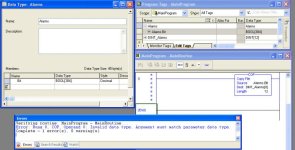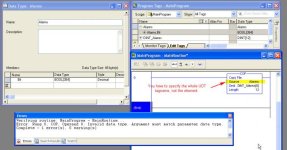Booleans are not the same thing as bits, but Logix5 and 500 programers often confuse them with B addresses. Booleans have some significant limitations when it comes to file instructions. There are several technotes in the AB knowledge base that cover the topic. One of the easiest is to put the bool array in a UDT as DABA showed. You can also convert all of your Bools to Alias tags with the base address being a bit in your DINT array. This method saves you the hassle of copying the state of each Bool to the DINTs but you will no longer be able to have the Bools in an array, it will be 384 discrete aliases (so give them a meaningful name while you are at it).
I don't know where you are programming level wise, but another option is to use a bit overlay. A bit overlay is a technique for attaching a tag name to an individual bit in a DINT, much the same way a timer's DN, TT, and EN bits are named bits in an integer. This is advanced programming but I've covered it briefly in a few threads. If you want more info do a search. Bit overlays are created in XML and imported. They cannot be created or modified in Logix5000, online or offline. To change one it has to be deleted and re-imported, so if its something you might be changing online then its not for you, but they do have their places.





